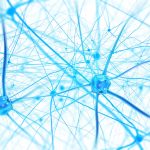Vestibular rehabilitation is a common therapy, used to help dizzy patients. Dizziness is a very non-specific term. It can include sensations of lightheadedness, feeling off-balance or subjective sensations of movement, either of your body or the environment, known as vertigo.
Although it may be an excellent solution to some types of dizziness, vestibular rehabilitation does not always have the best results when treating dizziness associated with brain injury.
To show why vestibular rehabilitation does not always work, it is important to first understand how it does work and what it is intended to treat originally. In this blog, we will go over the basics of vestibular rehabilitation, then discuss it in the context of brain injuries.
Please feel free to leave a comment below if you have any questions!
What is Vestibular Rehabilitation?
Vestibular rehabilitation is an exercise-based form of physical therapy that has been shown to reduce the symptoms of vertigo, dizziness, and loss of gaze fixation. Vestibular rehabilitation therapy aims to address disorders or impairments of the body’s vestibular system and specifically to improve the accuracy and efficiency of the vestibulo-ocular reflex (VOR). A properly functioning VOR ensures that for every head movement, there is an equal and opposite movement of the eyes, keeping them on target.
The vestibular system is part of the human body’s sensory system. It is responsible for your sense of balance and spatial orientation. It is made up of movement sensors in your inner ears called the semicircular canals and the otoliths, and central groups of nerve cells in your brainstem, cerebellum, and cortex that process the information from each ear. The brain integrates the info from the ears with what your eyes see and what your body feels, to create a conscious awareness of where you are in space.
Common Uses of Vestibular Rehabilitation Therapy
Vestibular rehabilitation is often used by physical therapists to treat conditions such as ear problems, inner ear infections, and other issues affecting the peripheral system. It can also be used to address the effects of multiple sclerosis, Meniere’s disease, or migraines on the vestibular system.
 Testing for Your Vestibulo-Ocular Reflex
Testing for Your Vestibulo-Ocular Reflex
If your vision gets blurry or lost when you move, you may have an issue with your vestibulo-ocular reflex (VOR). A simple test for the VOR that you can try at home is called Dynamic Visual Acuity. Use the eye chart on the right (click image for a full screen version).
Place your computer screen far enough away from you that you can still see the middle line of letters clearly. Now move your head in a No No motion while looking at the chart. With a normal VOR you should still be able to clearly see the same line or if not, the next line upwards. If you have to move two lines up or more to see clearly then your VOR may be impaired.
Brain Injuries & Vestibular Rehabilitation
If you have a brain injury, then vestibular rehabilitation is unlikely to help the situation in a significant way. Chances are that you’ve already tried it and you’re reading this because it wasn’t able to help you.
Vestibular rehabilitation is a great therapy that helps many people — but not often those with brain injuries. I’ll explain why…
Brain injuries present a different problem altogether. Vestibular rehabilitation addresses the signal that’s being sent from the vestibular system to the brain. But, in the case of a head injury, the signal is fine. What can be impaired is the brain’s ability to process that signal. To treat the problem, you need to repair the processing system itself.
To do this, Dr. Jay works to understand what areas of the brain have been affected by your injury and rebuild neuroplasticity in those areas. For more information on treatment for brain injuries, please give us a call at (905) 338-5951 or contact Dr. Jay at Northoak Chiropractic.



